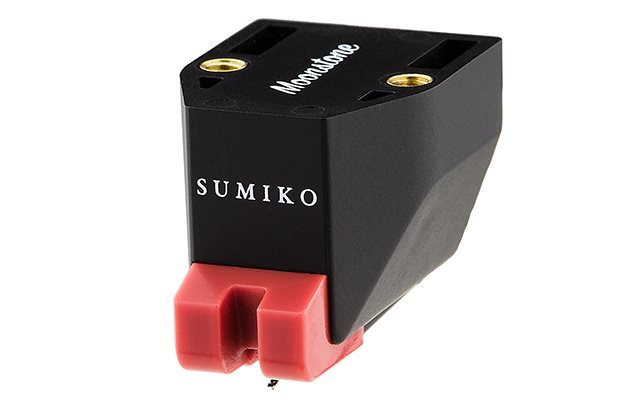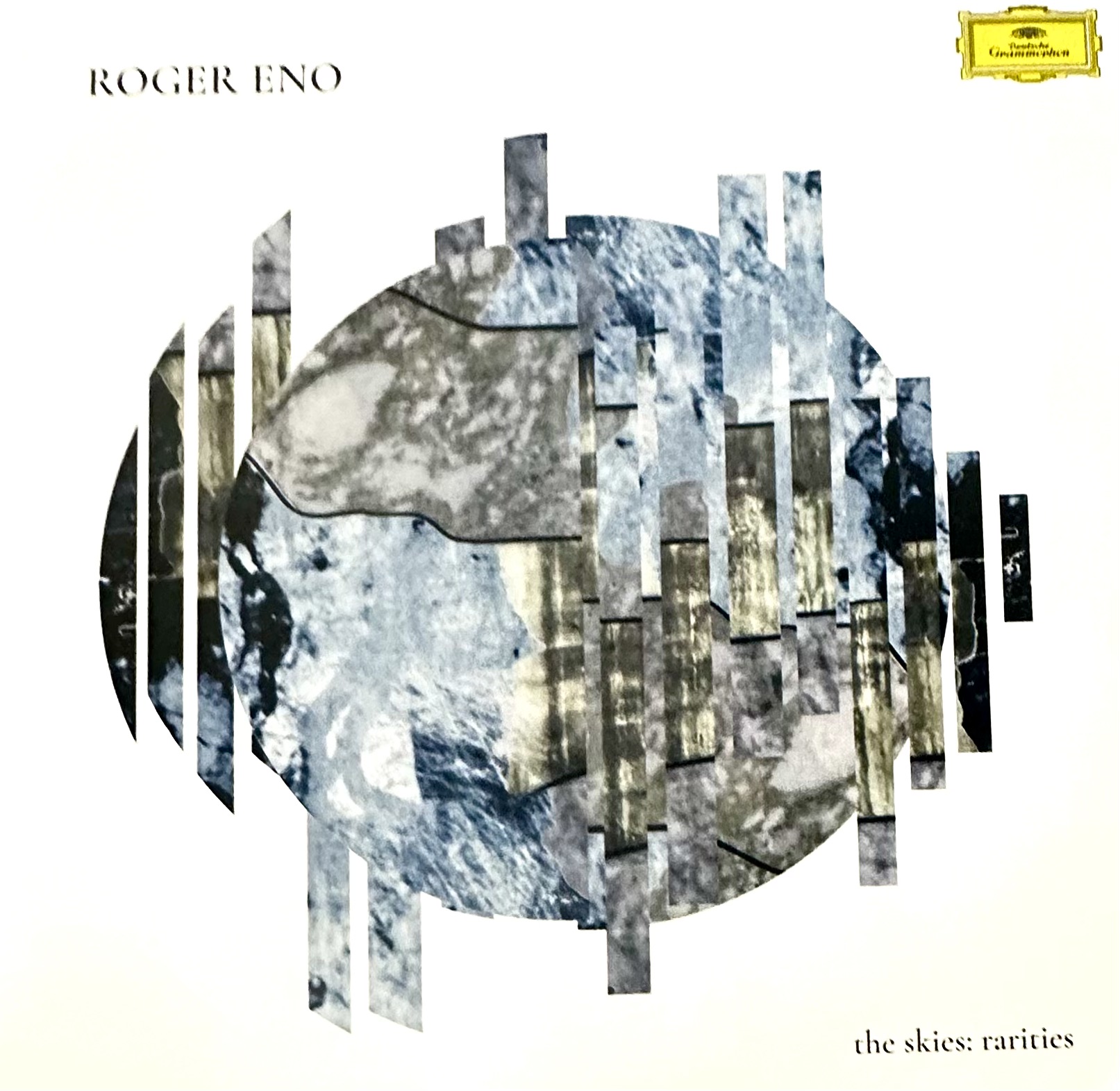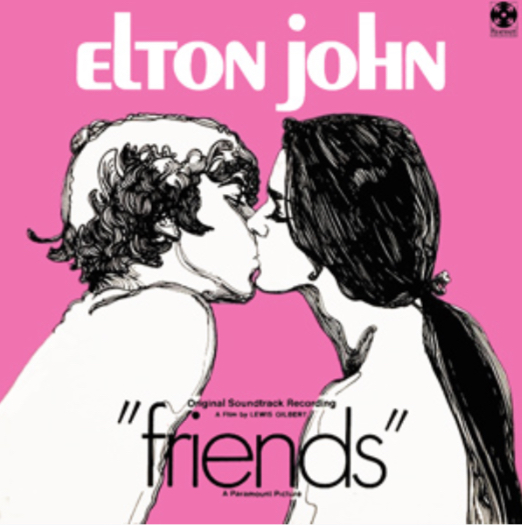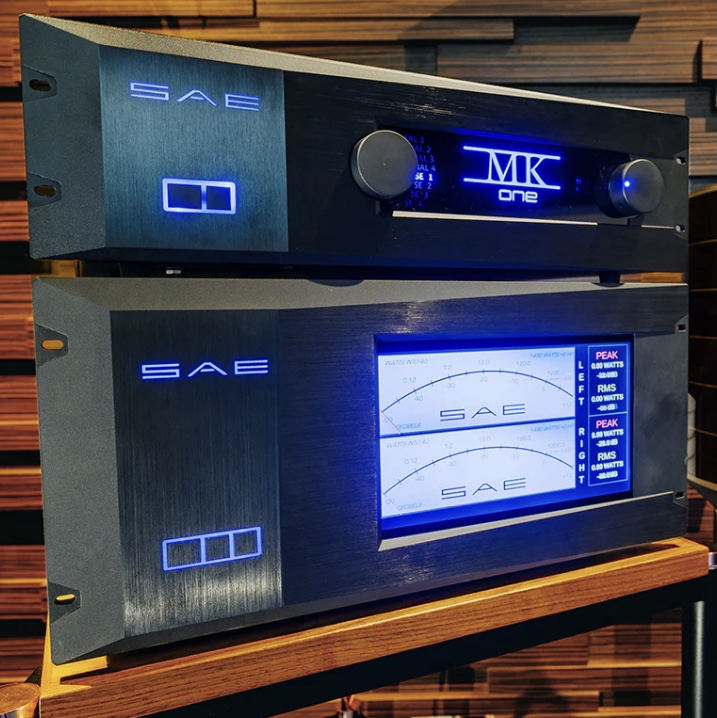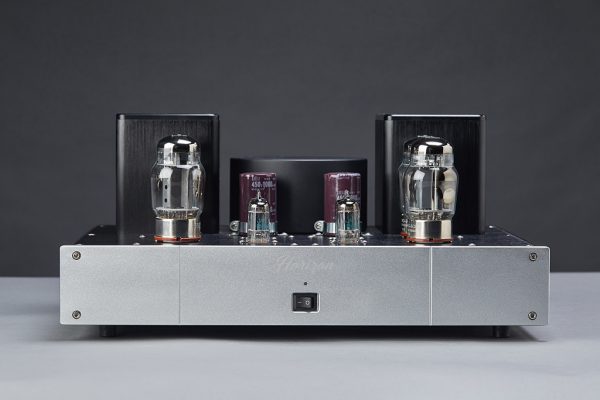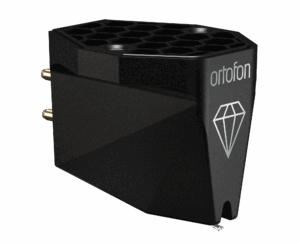As I just retired and find myself back full time to the second love of my life (the first being my beautiful wife of 30 years, Paula of course) and that is a lot of dedicated listening and reviewing. Upon throwing my hat back in the ring, almost immediately I was offered a chance to review the new Sumiko Moonstone cartridge. I gladly accepted the challenge!
Something happens to audiophiles when they get into hobbies and they pursue them for years upon years. We all start to become a bit uppity and competitive with our hobby friends. Cars, watches, art, guitars, fishing gear, guns, you name it we covet and we are always looking for an opportunity to move our toys upwards on the improvement scale. Stay with it long enough you will find yourself forgetting the excitement of the earlier days where little improvements brought great sonic gains and sense of pride. Albeit with an increasing sense of the nose thumbing effect to those lower on the food chain....
One of the sure fire upward steps one makes if they are still spinning vinyl is the move from higher output moving magnet or moving iron cartridges to lower output moving coil cartridges. Along with the sonic gains your wallet deflates proportionately! Now I have a chance to take a stroll down memory lane. Or so I thought....
Sumiko is a name familiar to almost any audiophile from the old guard like myself (retirees who don't like being asked their birthdates anymore) to the younger, newer generations of audio fans. I had my first stereo when I was 13 and never stopped listening to music since.
After college I took a vacation from being a total vinylholic snob and hard core audiophile to work, pay college loans off, get married and raise a family. At that point, thanks to friends and fellow audiophiles I had worked my system system to included a Luxman integrated amp, Nakamichi Dragon cassette deck, B&O 6002 turntable with matching cartridge, Allison 1 loudspeakers and a Tandberg reel to reel. Just to put an exclamation point on this, Monster speaker wire (first gen) was the top of the line at the time. There, that tells you how old I am.
12 years later I decided to foray back into the world of audio to find things had changed immensely. My first system included a pair of Quicksilver Audio KT88 amps (I still use them from time to time), B&W Speakers, a Parasound CD player and phono preamp, VPI JM19 turntable, and a Sumiko Pearl cartridge. Kimber Kables all throughout. I even invested in a dedicated rack! What a thrill it was to be back. The sound improvement was cataclysmic to say the least, and my second sojourn began.
As time wore on I upgraded things along the way. The KT 88s went into backup mode as I moved through a few different amps till I hit upon a pair of the original Jolida Music Envoys and the matching pre-amp. Speakers evolved and I ended up with a fabulous pair of Ushers that I kept for a very long time. Finally I settled on a set of Von Schweikert VR 4 version 345 (just kidding Albert)! Cartridges went from the Pearl to the Blue Point 2, Blue Point Special Evo 3, the Blackbird, and then the quantum leap toLyra, Ortofon, Koetsu cartridges. The point of all this is that I have had a very real, intimate relationship with Sumiko cartridges as personal choices for a number of years.
As they say "all things come around," or some such claptrap. As it turns out when it comes to Sumiko cartridges that saying seems to be true, because I am in possession of the new $299 Sumiko Moonstone MM cartridge to live with for a period. I thought it odd, considering the number of reviews I have done on high end cartridges to suddenly be faced with reviewing an entry level cartridge after parting ways with MM and entry level items about 15 years ago. The Moonstone is roughly 35 times less than my $10,500 Koetsu Azule! None-the-less I thought it would be fun to revisit my roots and see what the new Sumiko entry levels sound like compared to my memory of earlier versions.
Disclaimer—I was concerned that after listening to Lyra, Jasmine, Hahn, Koetsu wood and stone body cartridges that I would be a bit jaded against such a departure and back step from my current setup. I was adamant that I would not let that cloud my impression of the Moonstone. Happy to say that it didn't and I came way from my time with this little cartridge feeling certain that a budding audiophile, or a veteran with a limited budget, would both find value in the Moonstone from Sumiko!
As part of a new line up the Moonstone is the next to the top of the Moving Magnet line, second only to the Amethyst which retails for $300 more. The lower cartridges in the lineup, the Rainier and the Olympia can be upgraded to the Moonstone with a stylus assembly at any time for an additional charge. The Amethyst is a stand alone cartridge with its own body so you cannot upgrade the Moonstone to the Amethyst level. That being said, this is still a coup for Sumiko as the MM Series starts with the Rainier at $149!
As is customary in my reviews the manufacturers data:
The Moonstone is an affordable high-performance moving magnet cartridge that utilizes the powerful mechanically-generated electromotive forces of the moving magnet to help give your playback extra punch and convincing realism. Exceptionally well-balanced and dimensionally dense, the breathtaking dynamics of the Moonstone outperform many lower priced moving coil cartridges without requiring a size able investment in a MC preamplifier.
Specifications
- Cartridge Type: Moving Magnet
- Stylus: 0.3µM x 0.7µM Elliptical
- Cantilever Material: ⌀0.5mm aluminum
- Wire Material: Copper
- Internal Impedance: 1,130Ω
- Load Impedance: 47KΩ
- Frequency Response: 12Hz - 33kHz
- Output Voltage: 3mV @ 1kHz
- Channel Separation: 30dB @ 1kHz
- Channel Balance: 0.5dB @ 1kHz
- Compliance: 12x10-6 cm/dyn @ 100hZ
- Recommended Load Capacitance: 100pF - 200pF
- Vertical Tracking Angle: 20°
- Tracking Force: 1.8g - 2.2g
- Recommended Force: 2.0g
- Cartridge Weight: 6.5g
Replacement Stylus Unit:
- RS Moonstone
- RS Rainier
- RS Olympia
So there are the specs for those who crave these things.
When it came time for setting the cartridge up I pulled out my VPI JW19 table. I felt that this was a more likely level of table for this cartridge to be used on and mounted it. The VPI is such a stable platform and one of the most reliable turntables ever made. Maybe that's why people don't get rid of them.
Setup was a breeze, and the tracking weight was set right at 2 grams and never altered during the review period. This cartridge will not wow you with a fancy body made of Cantidentifyium. No translucent body with swirly colors, or trick colors. Black body with a red replaceable stylus assembly. ( I like the idea of an easy replacement, especially for budding vinyl enthusiasts. Who hasn't accidentally dropped the tone arm at least once thinking the lift was in the up position? I personally observed a $13k Koetsu Tiger Eye destroyed this way once. Ouch!)
Once I was sure I had things tracking correctly, I pulled out a bevy of vinyl and began listening. I am happy to say that I was more than just a bit surprised. Moving Magnet technology has come a long way since my last serious session listening to my last MM Sumiko Pearl with elliptical stylus. It actually came with my VPI when I bought it originally and served me well at the time. Now coming full circle raised more than my eyebrows on first listen.
Selections often remain consistent in the pursuit of staying with well know recordings that have become part of my brain. Here is a partial listing of the albums used for this review:
- Hiroshima, Another Place (Epic BFE39938)
- Rickie Lee Jones, Pop Pop (Geffen Records GEF 24426)
- Earl Klugh, Finger Painting (Mobile Fidelity UHQR - MFQR 1-025 / #741)
- Eva Cassidy, Songbird (S&P Records 501)
- Joe Satriani, Flying in a Blue Dream (Relativity Records 88561-1015-1)
- Doobie Brothers, Toulouse Street (Friday Music 212634)
- George Benson, Breezin (Warner Brothers BSK 3111)
- Harry Conick Jr, Your Songs (Columbia - 8869747228 1)
- Pink Floyd, Dark Side of the Moon (SHVL 801)
Before listening to any music I put the Moonstone through the paces of the Ultimate Analogue Test LP and the Cardas Frequency Sweep and Burn In Record. Always the best way to set up a cartridge. Once I was satisfied that it was set up optimally it was on to the music.
The very first track listened to was "My One and Only" from Rickie Lee Jones, Pop Pop. This is a track that reveals a good deal about a system. Her vocal presentation is best described as gutterally delicate, if that is even possible. It always gives me goose bumps to listen to it on a great system. Breathy sibilance, spot on tonal perfection, and a unique voice that leaves you on a lilting cloud. I was expecting something a bit muted and restrained. Boy, was I off the mark. The Moonstone delivered an astonishing amount of intricate detail and smoothness that belied it's price range. Was it on par with my Koetsu cartridges? No, of course not, but there was certainly less than $5400 dollar difference in performance between the Moonstone and my Urushi Vermillion! Round one—Moonstone gets an immediate thumbs up.
Next up came Joe Satriani's "Flying in a Blue Dream." I especially like this track because of the interplay of the rhythm section and the nylon string rhythm guitar underlying the seriously exotic electric lead guitar. Lots of harmonic pinch effects and amazing sustain. some of the nuance can easily get lost in the delivery by lesser electronics. The drums and bass are substantial and require a proper setup and a good cartridge to track it properly and deliver the delicacy of the underlying nylon string sound, and yet deliver the punch of the lead guitar work. The kick drum came through with the proper level of punch and air movement without being the least bit ruffled. It was sufficient in weight and speed to not detract from the track. The Moonstone not only didn't disappoint on this track, but it actually under promised and seriously over delivered. Every nuance was there. Not quite the detail of some of the cartridges I have become accustomed to living with, but so much more so than anyone has the right to except at this price point.
I followed up with Pink Floyd's "The Great Gig in the Sky." Have always loved this track because of Clare Torry's vocals, it can seem as though there are three different singers (during live performances there are often three different females doing the vocal improv) and that is because she did three different takes, and the end result was a combination of all three. One of the greatest tracks ever recorded. I was pleased that the detail during the playing of the track gave enough intimacy that it still felt like three singers. The Moonstone delivered the range of her delivery and the flux between softer crooning to the full volume and impact of her voice in a way that left you feeling like you were at the concerts and directly in front of her. The song filled my sizable 18 x 33 foot room, with 23 foot tall ceilings, with an air of electricity much the same as I have always gotten at a Floyd concert! Not an easy task for any cartridge. Well done to Sumiko.
Next up I went with Eva Cassidy. Perhaps the most perfect voice I have ever heard. She was simply angelic in tonal accuracy and an ability to deliver the most delicate vocals and immediately knock you off your feet with a power that belied her diminutive stature. No recording exploits that is better than the total solo effort that is her recording of "Somewhere Over the Rainbow." I always use this recording to appraise the ability of any piece of equipment to deliver emotion! If the delivery is seriously detailed and present it will bring a tear to my eye every time. With the Moonstone the emotion was delivered in the way I like. Delicate until the split second she blows you out of your seat. She is the only performer on the track playing guitar, synth, and doing the vocals. It may be one of the absolute best recordings of all time for not only the vocal supremacy, but also for the flawless arrangement and instrumental performance. Superb all the way around, and the Moonstone delivered all of it!
From Harry Connick Jr.'s Your Songs album, the upbeat, almost snappy "Besame' Mucho"came across as smooth, refined, and extremely well balanced. Balance is something that can get lost on lower end cartridges, yet the Moonstone did a hearty job of delivering this great tune. Harry's smooth and almost restrained vocals offset by brass flourishes never seemed distressed or ruffled as the stylus tracked the grooves that under a microscope must look like the Grand Canyon, and just as rugged. This was seriously fun and satisfying track to listen to multiple times.
I have been a huge fan of Hiroshima since I stumbled on their self titled album in 1979. I have seen them in concert half a dozen times since, and never get tired of listening to them. I have to admit that both my wife and I preferred the old line up with Barbara Long on vocals. This is a band that exudes a magic that only comes from years playing music together. They have eluded being boxed into any one genre all the way up to current albums. At the heart of the group is Dan and June Kuramtoto. Dan, an exceptional multi instrumentalist, and June, arguably the ultimate master of the Japanese Koto, a very interesting harp. Imagine smooth jazz meets the Gap Band meets Gino Vanelli, and they have a child born and raised in a cultural mix of traditional Japanese music and pop/jazz. The song "What's It To Ya?" Exemplifies this crossover. Almost a bit of Donna Summer in the vibe, clearly cut in the 80s and a bit heavy on the synths, but it has so much great stuff going on. A great beat, June's Koto underscoring everything and dancing delicately with a driving bottom end along with Barbara's vocals. This band should have been a huge top bill attraction in the 80s. If you want a really great look into the soul of Hiroshima, "One Wish" will take you there. Driving rhythms, pulsing bass line, coupled with lilting Koto playing on June's part interlaced with Dan's superb and yet sublime synth work. The Moonstone brought every individual instrument to their respective places in the soundstage, just as I have come to expect it over the years. It also delivered a great deal of the plucking vibe on June's Koto. Really superb for a $299 cartridge! On the track "Save Yourself for Me" the articulation of Barbara Long's impassioned vocals really brought the emotion of the song deep into my gut. Boy I miss her singing with the band!
There were a great many more hours listening to the Moonstone. No matter what I have thrown at it over the last two and half months it has never failed to please me. Strong presentation of sparkling highs and deepest lows without being upset by any of it at all. Even difficult tracking chores never seemed to ruffle the Moonstone.
The fact that it only costs $299 adds to the enjoyment of the cartridge. This cartridge should provide many, many hours of listening enjoyment and should something happen to the stylus, replacement is an easy, straight forward affair. When the user feels it is time to move up, the Evo III or Blackbird are also highly recommended upgrades from the Moonstone. In my opinion Sumiko have hit a solid home run with the Moonstone.
Anyone getting into vinyl would be hard pressed to find a better value than the Moonstone! It offers superior tracking abilities, overall balanced presentation, and a sonic signature more akin to MC cartridges of ten years ago than the the moving magnet cartridges of yore! It would also make a great backup cartridge for the audiophile whose taste run a little more exotic, but who cannot afford two exotic cartridges. This cartridge not only makes my list of highly recommended, but also piques my curiosity about the new reference series Songbird and Starling MC cartridges. Perhaps I will get an opportunity to review those new additions. Regardless check out the Moonstone if you want performance that leaves you moonstruck (Yes I said it, so there!). You will not be sorry!
Sumiko Moonstone Moving Magnet Phono Cartridge
Retail: $299
Sumiko of North America
2431 Fifth Street
Berkeley
CA 94710
510.843.4500




